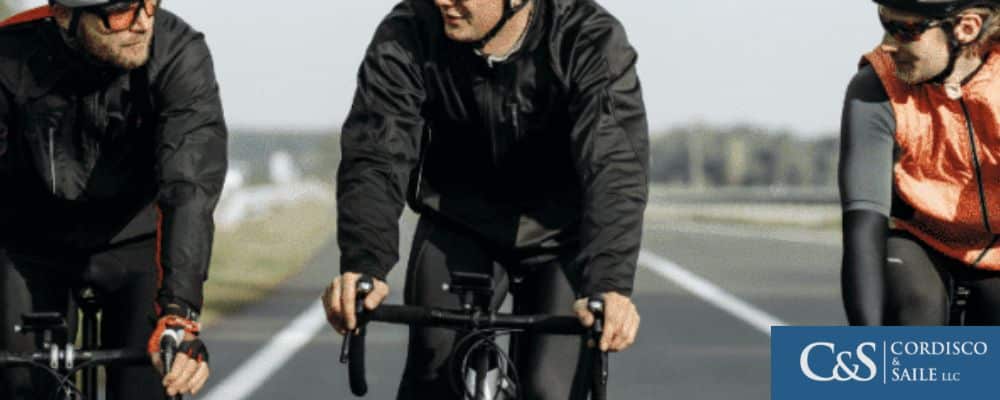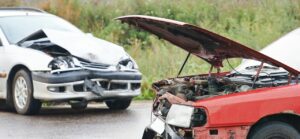Pennsylvania Bicycle Laws — 6 Laws All Cyclists Should Know

All bicyclists in Pennsylvania should know the rules of the road and exactly what their responsibilities are when traveling. This will help you not only avoid traffic citations and fines, but also serious collisions. Below, we discuss six of the most important Pennsylvania bicycle laws all cyclists should know.
So, which rules do you need to know? Well, before we begin, we should note that according to the Department of Transportation (DOT):“In Pennsylvania, a bicycle is considered a vehicle and, as such, is governed by a general set of rules (common to all vehicles) and a specific set of rules (designed for bicycles).”
#1: Bicycle Helmet Laws
Not all states in the nation have a law regarding whether or not cyclists must wear a helmet. In Pennsylvania, the law does not require adult cyclists to wear helmets; it also disallows using helmet use as evidence of the cyclist’s contributory negligence, per Pennsylvania Pa. Cons. Stat. § 3510(b).
The statutes do, however, require that all cyclists or passengers under the age of 12 wear a helmet.
We want to note, though, that riding without a helmet puts you at a huge and unnecessary risk for injury and death. The DOT explains, “A helmet is a bargain in injury prevention. Wearing a bicycle helmet whenever you ride can reduce your risk of a serious head injury by 85 percent.”
#2: Permitted Riding Areas
The law makes specific provisions for where cyclists may operate their bicycle.
- You can ride on the shoulder or on the travel lanes of the roadway.
- You have to ride in the direction of traffic.
- On a one-way road, you have to ride as near the left-hand curb or edge of the roadway as practicable in the direction of traffic.
- You may not ride your bike on the freeway.
- You may only ride on the sidewalk if no bike lane is available and/or you are not in a business district. When riding on the sidewalk you must always yield to pedestrians.
Get legal help from a legal team that will never stop fighting for you.

#3: Lighting Requirements for Bicycles
Many bicycle accidents occur at night, which means cyclists could prevent many of them by simply using the proper lighting. Headlamps serve two purposes: 1) to make yourself visible to other road users, and 2) to better light your path so you can see where you are going.
In Pennsylvania, bicycles must have an active front white light and a rear reflector. The rear reflector should be visible from 500 feet. An active rear red light is recommended, but not mandatory. Below are the three main types of bicycle lights to choose from. See your local bike shop for help selecting one that meets your needs.
- Small battery lights – These lights are most useful for riding under streetlights. It is important to aim the headlight so it looks as bright as possible to oncoming traffic. These types of lights, their batteries, and chargers are available at most hardware stores.
- Generator system – Unlike small battery lights, a good generator system is bright enough to light your way on dark roads. It is the best choice for long-distance riding, especially because you might not be able to buy or recharge batteries while riding. One disadvantage of a generator system is the fact that most systems will go dark when you stop riding. This means that generators are not ideal for stop and go riding in a city. However, some systems will come with a battery back up that keeps them illuminated when you stop.
- High-powered battery lights – These lights are the most powerful and brightest. They are the best for riding at night during harsh weather conditions, on dark roads, or off-road riding. High-powered battery lights are more expensive and heavier than most bike lights, and they need recharging frequently.
#4: Right-of-Way Laws for Cyclists
Since bicycles (or pedalcycles, as the law refers to them) are vehicles under Pennsylvania law, you have to follow the same right-of-way laws that drivers do, including yielding to pedestrians.
75 PA Cons Stat § 3508 provides: “A person riding a pedalcycle upon a sidewalk or pedalcycle path used by pedestrians shall yield the right-of-way to any pedestrian and shall give an audible signal before overtaking and passing a pedestrian.”
#5: Rules Regarding Operating Your Bike
regarding how you can operate your bike that you should know.
First of all, you have to ride on a regular seat.
Also, you cannot ride with someone on your cross bar or handlebars. Section § 3504 states: “No pedalcycle shall be used to carry more persons at one time than the number for which the pedalcycle is designed and equipped except that an adult rider may transport a child in a pedalcycle child carrier which is securely attached to the pedalcycle or in a trailer which is towed by a pedalcycle.”
Lastly, you have to keep at least one hand on the handlebars. Section § 3506 prohibits you from carrying anything that prevents you from steering with at least one hand.
#6: Riding while Under the Influence
It should go without saying, but to reiterate: you do not want to ride your bike while intoxicated. The fact that a bike has no motor does not lessen the dangers of driving under the influence.
The state of Pennsylvania requires all drivers and riders, regardless of vehicle type, to ride sober. As such, cyclists may not ride under the influence of drugs or alcohol. Failure to comply with this law is a crime and is punishable under the law.
Where can I learn more about bicycle laws and safety in PA?
In addition to reading the DOT’s manual we discussed earlier, you can check the DOT’s PACommutes site for more information, as well as Just Drive PA, which has tips, laws, videos, and other bike safety resources.
Also, be sure to participate in May’s National Bike Month, a campaign that focuses on bicycle safety.
If you or your loved are ever involved in a bicycle crash, you are welcome to call our bicycle accident attorneys to help you file a claim. At Cordisco & Saile LLC, our attorneys are ready to get to work as soon as we speak with you. To learn more, contact our office in PA at 215-642-2335 for a free consultation.







